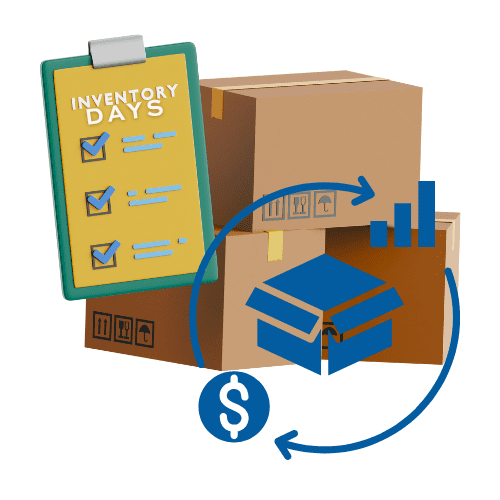How Inventory Days Can Supercharge Your Business Cash Flow
For businesses that carry inventory or stock, understanding and managing inventory days is one of the most powerful strategies to improve operating cash flow. Whether you run a clothing store, a hardware shop, or a tool supply business, the principle remains the same: the faster you convert stock into cash, the healthier your business finances.
What Are Inventory Days?
Inventory days refer to the amount of time it takes for your stock to move from purchase to sale, and ultimately into cash in your bank account.
For example:
-
A clothing business buys garments that sit on the shelf for 3 months before they are sold.
-
A hardware store purchases tools, but it takes 2 months to sell them and receive payment.
The longer your inventory sits unsold, the more cash is tied up in stock, impacting your operating cash flow and your ability to invest in growth.
Why Inventory Days Matter for Cash Flow
Think of inventory as a stack of money sitting on your shelves. The slower it moves, the longer your cash is locked in, reducing your ability to pay suppliers, invest in marketing, or seize new opportunities. Shortening your inventory days allows you to:
-
Improve liquidity and cash availability
-
Reduce storage and holding costs
-
Increase your ability to reinvest in growth
-
Strengthen your financial position for lending or investor opportunities
Strategies to Reduce Inventory Days
-
Measure Inventory Days
Start by calculating how long stock stays in your business before it’s sold. Use this metric as a benchmark for improvement. -
Optimise Inventory Management Systems
Streamline ordering, tracking, and stock rotation. Accurate data ensures you only carry what you need, avoiding excess stock. -
Benchmark Against Industry Leaders
Take inspiration from companies like Dell Computers. In the early days, Dell had 18 inventory days. Management believed reducing it to 14 days was impossible, but within months, they achieved it. Dell continued refining the process until inventory turned over in just a fraction of a day. Today, parts arrive at their factory and are assembled into computers in roughly two hours before shipping. -
Focus on Turnover, Not Just Stock Levels
The goal is not just to hold less stock but to increase turnover speed. Quick turnover means faster cash conversion and more funds available to grow your business.
Implementing Inventory Day Strategies in Your Business
-
Regularly review stock levels and sales patterns
-
Prioritise fast-moving items and adjust purchasing accordingly
-
Use technology and inventory management software to track performance
-
Set ambitious but achievable targets to gradually reduce inventory days
By focusing on inventory days, business owners can take control of cash flow, reduce financial strain, and unlock opportunities for investment and growth.
Takeaway: Treat your inventory like liquid capital. The faster it moves, the stronger your business cash flow becomes. Start measuring, optimising, and reducing your inventory days today, and watch your business finances transform.


